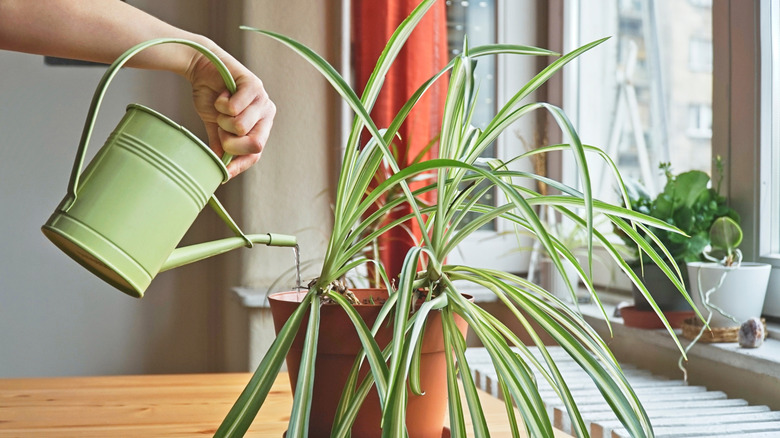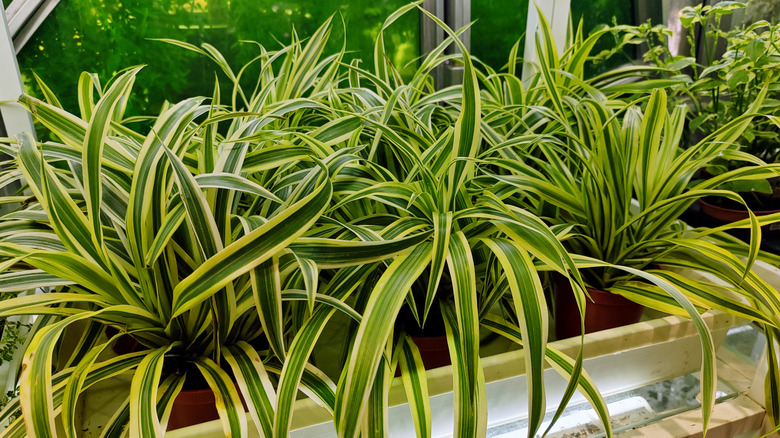Keep Spider Plants Happy All Winter Long With These Essential Tips
While caring for houseplants satisfies the human need to connect to nature, elevating our mood and relieving stress, these living additions to our indoor decor also offer very practical benefits. During the winter, they relieve dry skin and sore throats by raising the indoor humidity. Plants are also great work companions. Studies show that they can increase productivity and concentration. Spider plants (Chlorophytum comosum) have a helpful method for reminding us that winter is coming. As the days shorten in the fall, they produce small, white flowers that become plantlets dangling on stems that can reach two feet in length. Attending to the few winter needs of this easy-to-grow houseplant will keep it happy all season long.
Most of the wintertime issues facing spider plants are caused by the temperature and sunlight changes that the cold months bring. Drafts from windows and doors, as well as heating vents and portable heaters, create problems. Too little or too much sun can cause poor growth or leaf browning, and spider plants are particular about how much water they get and the size of the pot they live in. This may sound as though these lush plants need a lot of winter care, but they are actually tolerant of neglect. Once you've established the ideal location, growing and caring for a spider plant only requires a regular watering schedule.
Tending your spider plant in the winter
Spider plants may be the perfect indoor houseplant, especially if you're afraid you don't have a green thumb. In the winter, move them away from cold windows, but make sure they still get bright, indirect sun, as direct sun causes leaf browning. Keep the room temperature at 65 to 75 degrees Fahrenheit. You may need to water more frequently in the winter when the air is drier inside than you do in the summer. Let the soil dry slightly, and then water the plant thoroughly. Letting the spider plant sit in water can cause root rot, so empty plant saucers after you've watered or carry the plants to the sink, water them, and return them to their usual spots. They don't need much fertilizer — you can safely skip it in the winter.
Diagnosing problems your spider plant may have over the winter is difficult in some cases because leaf burn or browning can be caused by a number of things, but they can all be easily remediated. Underwatering, low humidity, and the accumulation of chemicals or salt in the soil are the main culprits. You can check the plant more frequently to see if it needs more water and increase the humidity. If you think chemicals from tap water are building up in the soil, make sure water drains out of the pot after each watering, or use only rainwater or distilled water when it's dry. Wilted plants may be suffering from root rot — cutting back on watering may or may not save the plant. Repot your houseplant in the winter if the roots start to grow out of the drainage holes.

